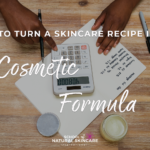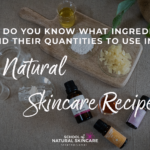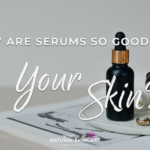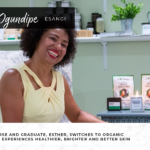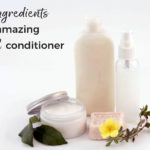When you’re ready to take your products to the next level, then you’ll want to start getting serious about the quality of the ingredients you’re choosing. But how can you tell whether your ingredients are high-quality or not? And what does high-quality even mean?
The Good, The Bad, and the… Questionable…
First of all, what is a high-quality ingredient?
While there are some general quality guidelines that apply across the board, for the most part, it depends on which type of ingredient you’re talking about. For essential oils, it means they are pure, without any additives like carrier oils, solvents, or synthetic aroma chemicals. For butters, it means they are made from properly harvested plant material, not damaged during processing, and stored properly to prevent oxidation. Overall, you’re looking for ingredients that are exactly what they say they are, created from the very best sources, well-labeled and easily-verified as safe.
So, where do you start? Rather than going in-depth on how to verify the quality of every single type of ingredient, here’s a quick guide to how to start reviewing ingredient and supplier quality like a professional formulator.
How to Find a Quality Cosmetic Ingredient Supplier
1. Firstly, who is the vendor of the raw material in question, and what do you know about them?
Where did you buy the raw material from? Who originally manufactured the raw material, or where was it sourced from? Does the manufacturer hold any pertinent certifications or memberships? For example, fair-trade certified, organic, vegan and so forth. What are those certifications? The more information you can find about the origin of the raw ingredient, the better.
Even if a company isn’t certified or a member of a specific organization, that doesn’t mean their raw materials are not safe, it just means you need to look more closely at each individual raw material.
Do you have a good recommendation from other industry professionals for this company? Again, it’s good to do your own research, but it’s also very useful to use the experience of other trusted professionals to help begin your search for the highest-quality ingredients.
Our courses include a comprehensive supplier list with hundreds of recommended suppliers from all over the world. We also have a shortened list of recommended suppliers available here. Our students’ discussion forums are also buzzing with requests and recommendations. We recommend only buying from well-established, specialist cosmetic raw material or essential oil suppliers, and being especially wary of materials sold on sites like ebay, Amazon and Etsy.
2. Next, what information does the vendor provide about the raw material?
Is the raw material itself certified, for example as organic? If so, by what organizations, and what do those certifications mean about the raw material quality? If it’s not, that doesn’t mean it’s unsafe, it may just mean that the company itself does not hold the certification, and therefore even if they’ve purchased their fair-trade shea butter, for example, from a distributor, they are not authorized to pass along those claims, even if the shea butter is still technically fair-trade.
Is there a Certificate of Analysis (COA) and Material Safety Data Sheet (MSDS) available for the raw material? In the European Union, MSDS may not be required for materials which are not considered dangerous. A supplier may not have them for shea butter, and this doesn’t mean it’s not a safe or high-quality product. But most suppliers do keep an MSDS on file for all ingredients.
Essential oils especially seem to be popping up on the market from all sorts of suppliers, but not all of them are of the highest quality. Is the manufacturer able to provide an International Fragrance Association (IFRA) certificate, or allergen certificate?
If you are going to be selling your products, you’ll need to keep a copy of the COA, MSDS, IFRA Certificate and/or Allergen report with your documentation. Some suppliers provide these documents as downloads, some require you to email them, and others will only provide for registered businesses. Others might make you pay for each document you need. None of this means the supplier isn’t legit, it just means that’s their policy, so check it out and ask!
Does the supplier provide guidance on how to use the raw material? Can they answer your questions about it? You’ll probably find it very helpful if they can. A supplier ought to provide information for how to appropriately use the product: Things like pH, temperature stability, solubility, and compatibility/incompatibility with other types of ingredients.
3. Is the raw material labelled properly?
Are the raw materials labelled with their proper INCI name? INCI stands for the International Nomenclature of Cosmetic Ingredients, and is a universal, worldwide system of ‘proper’ names for cosmetic ingredients based on the Latin or scientific name. The INCI name is required for labelling your finished product and to record in your documentation. It tells you precisely what the ingredient is, standardized across all products and manufacturers. If a material is labelled as something vague, like Emulsifying Wax, this can actually be many different things. An INCI name, on the other hand, will tell you exactly what it contains.
Do essential oils have their proper Latin name, or (if applicable) which part of the plant was used for distillation? Also, if the essential oils have several chemotypes, they should be written on the label, for example: Rosmarinus officinalis ct. Cineol: rosemary essential oil, chemotype cineole.
Does the product include best-before or best-after-opening dates on the label? Raw materials should have an expiration date noted on the label, either in the form of “best before” date or in the form of “period after opening.”
Also, in the European Union, materials considered dangerous ought to have specific pictograms on the label. If these are present, this means the supplier is serious and knows what they are doing.
Is a batch number clearly stated on the label? You’ll need this as part of your documentation if you sell your products.
How suitable is the packaging the raw material is sold in? We have bought oils before which had a hand written label attached to them. As soon as a trickle of oil ran down the side of the bottle, the label couldn’t be read clearly anymore! Information on labels should be indelible.
4. Does the product or company have any outrageous claims?
This is a bit of a tricker area, and in some ways, more subjective. Does the company make any extraordinary claims about their ingredients, or suggest that their ingredients can cure certain conditions or diseases with claims that are not verified? It’s worth it to be skeptical and stay safe.
Remember that things like essential oils should never be consumed or put on the skin undiluted, except when under the direction of a trained aromatherapist. Cosmetic ingredients should not be marketed as drugs or cures.
The beginner’s guide to formulating natural skincare products (from scratch, like a professional)!
The essential foundation you need to help you start creating your own natural skincare products from scratch rather than simply following recipes!
Download this fabulous guide and you’ll learn:
- What formulating is and why you need to be doing it!
- The difference between following recipes and formulating your own products.
- How to formulate like a pro! Seven top tips for becoming a confident skincare formulator.
- Our step-by-step process to designing products people love.
- Four easy ways to personalize your skincare products.
- Choosing the right carrier oils for your beauty products.
PLUS: TWO FREE WORKSHEETS!
- Our Cheatsheet Download: How professionals design skincare products (taken from our Diploma in Natural Skincare Formulation).
- Our Safe Product Checklist: How to make sure the skincare products you create are safe and stable.


